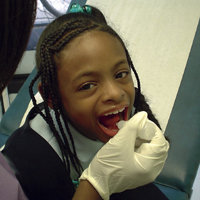 Internationally, SLIT is used widely (50-75% in some European countries), with full regulatory and government backing. U.S. allergy leaders are writing in support of SLIT. The World Health Organization indicated its use in its 1998 position paper. In November 2001, an international workgroup, including U.S. allergists, published the ARIA (Allergy Rhinitis and its Impact on Asthma) guidelines indicating SLIT as an effective alternative as well. Since that time, dozens of well-designed studies (randomized, double-blind, placebo-controlled) have been peer reviewed and published. Cochrane Review has performed a meta-analysis and determined SLIT both safe and effective.
Internationally, SLIT is used widely (50-75% in some European countries), with full regulatory and government backing. U.S. allergy leaders are writing in support of SLIT. The World Health Organization indicated its use in its 1998 position paper. In November 2001, an international workgroup, including U.S. allergists, published the ARIA (Allergy Rhinitis and its Impact on Asthma) guidelines indicating SLIT as an effective alternative as well. Since that time, dozens of well-designed studies (randomized, double-blind, placebo-controlled) have been peer reviewed and published. Cochrane Review has performed a meta-analysis and determined SLIT both safe and effective.
Two additional pivotal studies to note are the “10 year study…” showing the long lasting effect of SLIT (see section 1), and the 2004 head-to-head study of SLIT to injection in a double-blind, double-dummy approach (see section 2). Few studies (two) could be found showing that SLIT was not effective, and those results are equivocal and dated.
Additional research efforts are underway in the U.S. and internationally, updates can be viewed at www.allergychoices.com. We will be starting a double blinded randomized prospective study soon.
We are currently offering some of the well worked out allergy drop protocols from LaCrosse Allergy Associates (see Allergy Choices in our Links Section). Both the AAOA and LaCrosse have separate regimens which seem to better benefit certain patients. Dr. David Morris and colleagues have a greater than 30 year history of successfully treating ingestant, inhalant, and chemical sensitivities with drops and we have the ability to tap into that expertise by their formulations and pharmacy. This has proven extremely helpful in the complex refractory food allergy patient that has been failed by other practitioners.
1. Recent Major Texts, Guidelines, Papers and Editorials
1. Cox, Linda, et al “Sublingual immunotherapy: A comprehensive review,” J Allergy Clin Immunology, Vol. 117, No. 5, pgs. 1021-1035, May 2006.
2. Nelson, Harold “Advances in upper airway diseases and allergen immunotherapy,” J Allergy and Clin Immunology, Vol. 117, No. 5, pgs. 1047-1053, May 2006.
3. Durham, Stephen et al “Sublingual immunotherapy with once-daily grass allergen tablets: A randomized controlled trial in seasonal allergic rhinoconjunctivitis,” Vol. 117, No. 4, pgs. 802-809, April 2006.
4. Passalacqua, Giovanni et al “Non-Injection Routes for Allergen Immunotherapy: Focus on Sublingual Immunotherapy,” Inflammation & Allergy – Drug Targets, Vol. 5, pgs. 43-51, 2006.
5. Passalacqua, Giovanni et al “Quantitative assessment of the compliance with once-daily sublingual immunotherapy regimen in real life (EASY Project: Evaluation of A novel SLIT formulation during a Year, ” (Letter to the Editor) J Allergy Clin Immunology, Vol. 117, Number 4, April 2006.
6. Bieber, T. Editorial “Allergen-specific sublingual immunotherapy: less mystic, more scientific,” Allergy, Vol. 61, pgs. 149-150, 2006.
7. Dahl R. et al, “Specific immunotherapy with SQ standardized grass allergen tablets in asthmatics with rhinoconjunctivitis,” Allergy, Vol. 61, pgs. 185-190, 2006.
8. Marogna, Maurizio, et al, “Clinical, functional, and immunologic effects of sublingual immunotherapy in birch pollinosis: A 3-year randomized controlled study,” J Allergy Clin Immunol, Vol. 115, Number 6, pgs. 1184-1188, June 2005.
9. Cingi, C. et al “Efficacy of long-term sublingual-oral immunotherapy in allergic rhinitis,” ACTA Otorhinolaryngol Ital 25, pgs. 214-219, 2005.
10. Gidaro, G.B., et al, “The safety of sublingual-swallow immunotherapy: an analysis of published studies,” Clin Exp Allergy, Vol. 35, pgs. 565-571, 2005.
11. Pajno, Giovanni “Allergen immunotherapy in early childhood: between Scylla and Charybdis!,” Clin Exp Allergy, Vol. 35, pgs. 551-553, 2005.
12. Courtney, A.U, et al, “ Childhood Asthma: Treatment Update,” American Family Physician, Vol. 71, No. 10, pgs. 1959-1968, May 2005.
13. Parks, Kevin “Advances in Immunotherapy: Current Considerations and Beyond,” The Allergy and Immunology Report, Vol. 1 No. 2, Spring 2005.
14. Bousquet, J “Sublingual immunotherapy: from proven prevention to putative rapid relief of allergic symptoms,” Editorial, Allergy, Vol. 60, Issue pgs. 1-3, January 2005.
15. Lambrecht, BN “Dendritic cells in the pathogenesis of asthma” Clinical and Exp. Allergy Rev 2004, 4:123-128.
16. Nelson, Harold “Advances in upper airway diseases and allergen immunotherapy,” Journal of Allergy and Clinical Immunology, Vol. 113, No. 4, Pages 635-42, April 2004.
17. Passalacqua, Giovanni, et al, “Efficacy and safety of sublingual immunotherapy,” Annals of Allergy, Asthma, and Immunology, Vol. 93; 1, pgs. 3-12, 2004.
18. Portnoy J. “Allergen Immunotherapy in the Prevention of Asthma” Current Opinion Allergy Clinical Immunology 4(2): 131-136, 2004.
19. Passalacqua, G, Canonica, GW, “Sublingual or injection immunotherapy: the final answer?” Allergy 2004: 59: 37-38.
20. Malling, Hans-Jorgen “Comparison of the clinical efficacy and safety of subcutaneous and sublingual immunotherapy: methodological approaches and experimental results,” Current Opinion in Allergy and Clinical Immunology, Vol. 4, pgs. 539-542, 2004.
21. Mosages, R “The role of hyposensitization: do we need to start rethinking?” Clinical Opinion in Allergy and Clinical Immunology, 2004, Vol. 4, pgs. 155-157.
22. Norman, Philip S. “Immunotherapy: 1999-2004,” Journal of Allergy and Clinical Immunology, June 2004 Vol. 113, No. 6, pgs. 1013-1023.
23. Passalacqua G, Lombardi C, Canonica GW “Sublingual Immunotherapy: An Update,” Current Opinion in Allergy and Clinical Immunology, Vol. 4 (1), February 2004.
24. Markert, UR and Elsner P. Local Immunotherapy in Allergy, Chemical Immunology and Allergy (lead chapter by D. Morris, et al,) Vol. 82, Karger, Basel, Switzerland 2003.
25. Wilson, DR Torres, LM, and Durham SR “Sublingual immunotherapy for allergic rhinitis” (Cochrane Review), The Cochrane Library, Oxford, England, Issue 2. 2003.